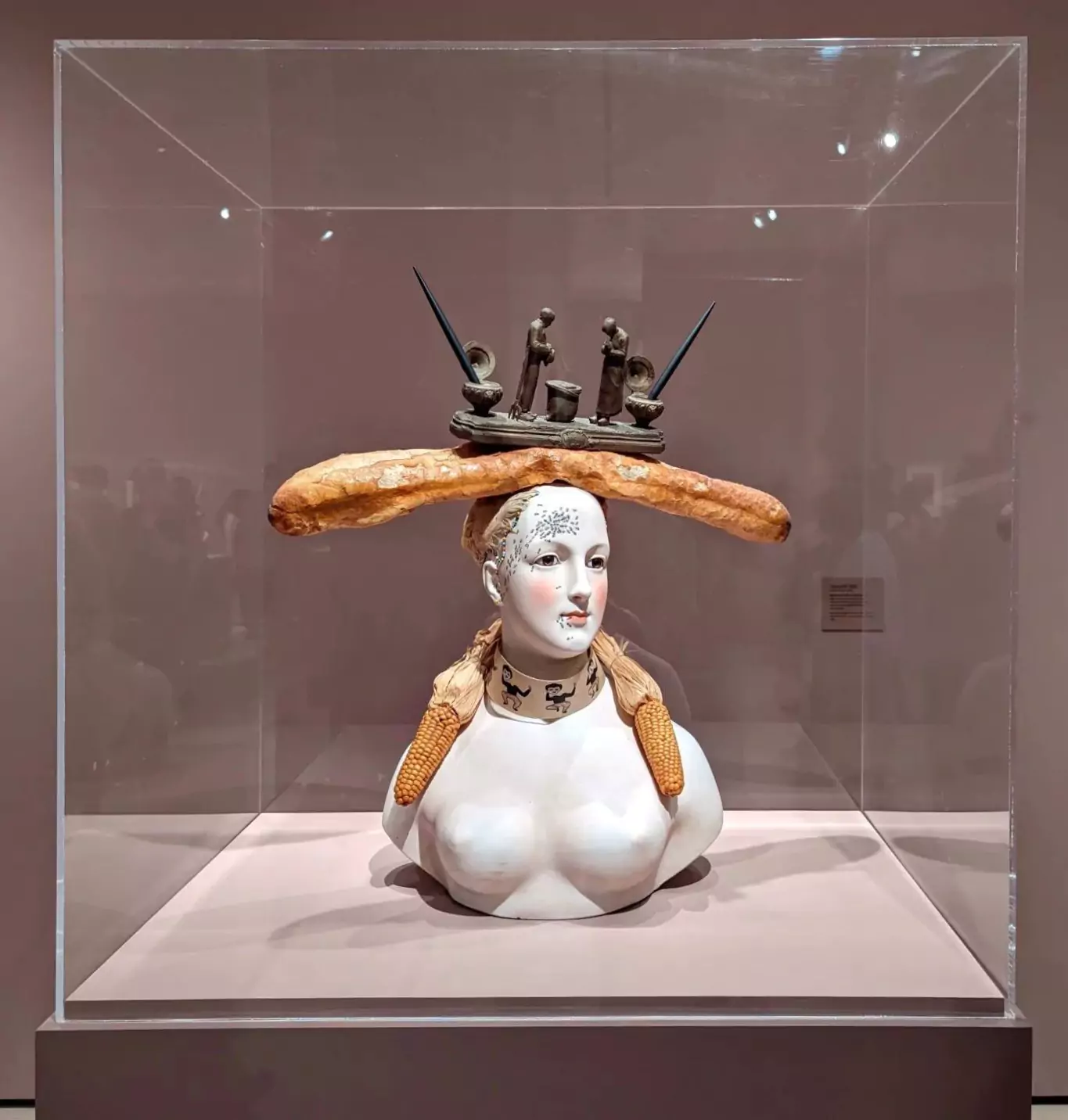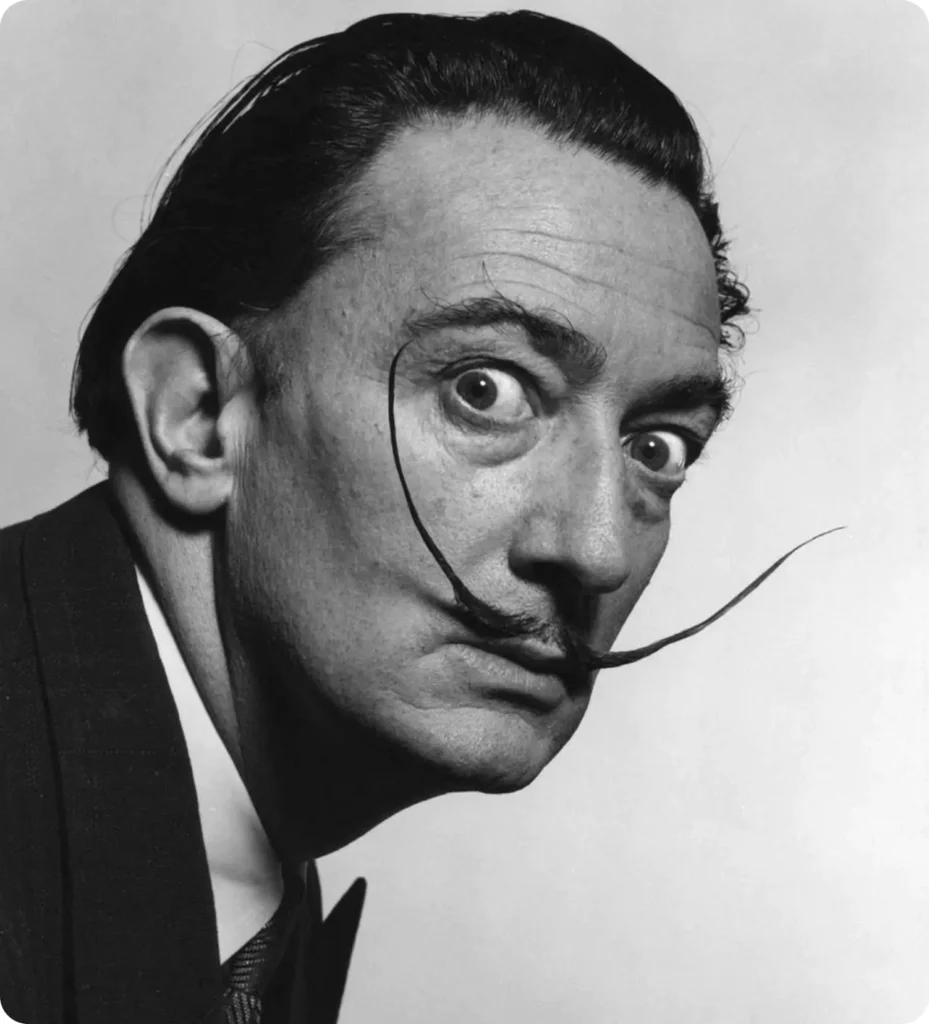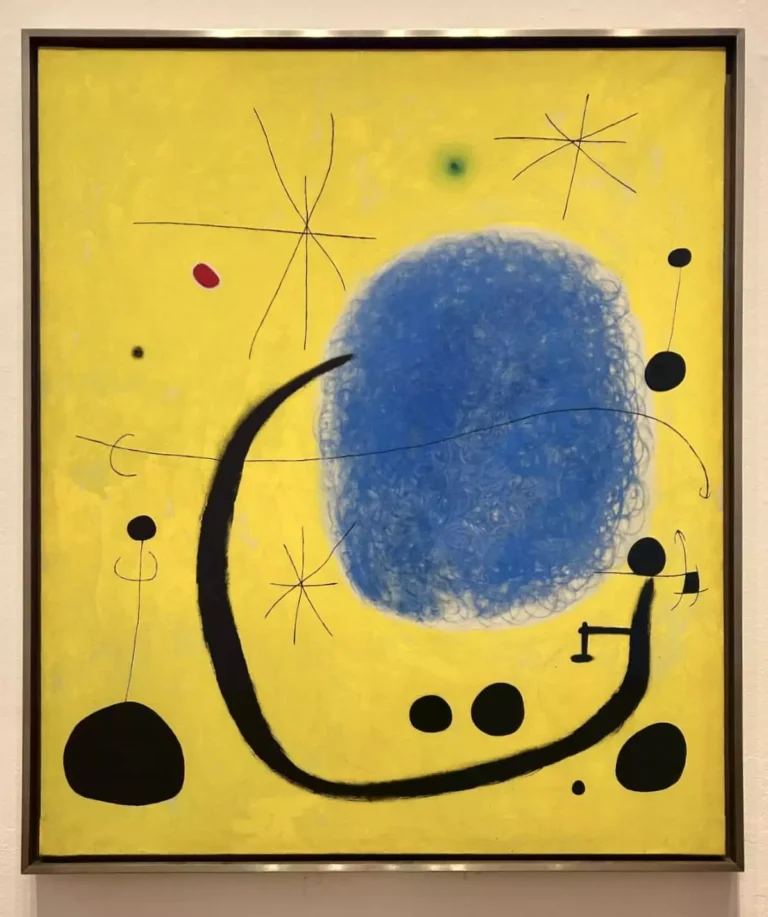Looking for a muse? Check no further. Discover the Best of Art, Culture, History & Beyond!

Artist : Salvador Dalí Title: Retrospective Bust of a Woman
Date :1933 (some elements reconstructed 1970)
Medium : Painted porcelain, bread, corn, feathers, paint on paper, beads, ink stand, sand, and two pens
Dimensions: 29 x 27 1/4 x 12 5/8″ (73.9 x 69.2 x 32 cm)
Location: The Museum of Modern Art, MoMA, New York
Salvador Dalí: The Enigmatic Genius Behind the Surreal
When you think of surrealism, one name that immediately springs to mind is Salvador Dalí. This larger-than-life figure was not only a groundbreaking artist, but also an eccentric character whose work continues to captivate audiences across the world. Born in Catalonia, Spain, in 1904, Dalí was a true visionary, reshaping the very foundations of art in the 20th century. His unique perspective, paired with a wild imagination and a deep understanding of technique, made him one of the most influential artists of his time. But Dalí’s genius went beyond his work; it was his personality, his flair for the dramatic, and his constant desire to shock and challenge that kept the world talking.
Dalí’s childhood played a significant role in shaping his future career. He had a turbulent relationship with his family, especially with his father, who was a strict disciplinarian. Despite this, Dalí found solace in art, which became his escape and a means of expressing himself. He attended art school in Barcelona and soon developed a style that was uniquely his own—rich with symbolism, eroticism, and dream-like landscapes. While influenced by the classical techniques of the Old Masters, Dalí’s true inspiration came from the world of dreams, the subconscious, and the bizarre. His work is often seen as an exploration of the surreal, blending the realms of reality and imagination in ways that few artists before him had ever done.
Dalí was a master of technique. His paintings are meticulously detailed, with every brushstroke serving a purpose, every image carefully constructed. He was fascinated by the works of Renaissance artists and spent hours studying their techniques. His devotion to craft was matched only by his desire to experiment with new ideas and push boundaries. His willingness to merge classical painting methods with modern surrealist concepts made him stand out in the art world. Dalí’s work was often infused with bizarre, dream-like imagery: melting clocks, distorted faces, and desolate landscapes that felt both familiar and foreign at the same time. These images weren’t just random—each one had meaning, drawing from his personal experiences, his memories, and his profound understanding of psychology and philosophy.
Dalí’s persona was just as surreal as his paintings. He was flamboyant, theatrical, and often deliberately outrageous. He cultivated an image of the mad genius—his iconic mustache, eccentric clothing, and outlandish behavior were all part of his strategy to keep the public fascinated with him. He wasn’t just an artist; he was a performer, a showman who knew how to keep the world’s attention. He loved controversy and regularly sought out opportunities to shock his audiences, whether through his paintings, his public statements, or his personal life. And while his persona might have seemed like an act at times, there was a deep intellect at work behind the theatrics. Dalí was always playing with ideas, creating contradictions, and challenging the boundaries of what was considered “normal” in art and society.

Among his many works, one that stands out for its striking approach and complex themes is Retrospective Bust of a Woman (1933), a masterpiece that resides in the collection of The Museum of Modern Art (MoMA) in New York. This unique sculpture exemplifies Dalí’s surrealist style, showcasing his talent for creating the unexpected from the ordinary.
A Close Look at Retrospective Bust of a Woman (1933)
Obsessed with French painter Jean-François Millet’s work The Angelus, Dalí had just found a kitsch gold-painted Angelus inkwell. He decided to create Retrospective Bust of a Woman, an assemblage featuring this inkwell as the crown for a hairdresser’s porcelain dummy. Dalí built a type of hat for her consisting of a brimless feather cap topped by a loaf of French bread with the inkwell balanced at its apex like a totem pole.
Dalí adorned the surrealist bust with two ears of corn and a makeshift choker made of a zoetrope strip. Such strips were inserted into pre-film devices that produced the illusion of motion by displaying a sequence of drawings or photographs showing progressive phases of that motion. This particular strip dates from the 17th century and shows a gentleman repeatedly losing and reattaching his head. As a choker, it suggests a similar fate for the female bust. Amplifying the edible nature of the bread and corn, Dalí paints a swarm of ants gathering as if they are eating crumbs in the upper corner of the face. Ultimately, it appears the woman is the object to be consumed. Anecdotally, Dalí said that when this work was first exhibited, Pablo Picasso’s dog ate the original loaf of bread.
Examining the bust itself, the woman’s face has a serene, almost porcelain-like complexion, and is embellished with what seem to be corn kernels spread across her cheeks, whimsically forming a pattern that contrasts with her otherwise smooth skin. Her hair appears braided and hangs down beside her neck, while a black and white fringed collar encircles her throat.
The juxtaposition of ordinary objects with the human form in a non-traditional manner is a distinctive feature of Dali’s work that questions the viewers’ perceptions of reality and conventional beauty. The unexpected pairing of items, combined with the detailed craftsmanship, invites onlookers to interpret the piece from a psychological and surrealist standpoint, stimulating the subconscious and poking at the accepted boundaries of art at the time of its creation.
Dalí’s Influence on the Art World
Salvador Dalí’s influence on the art world is immeasurable. As one of the most prominent figures in the surrealist movement, he reshaped the way we think about art, pushing the boundaries of representation and perception. His legacy can be seen in the works of countless artists who followed in his footsteps, from contemporary surrealists to those working in other genres. Dalí’s exploration of the subconscious, his use of dream imagery, and his ability to bend reality were groundbreaking for their time, and his work continues to resonate with audiences today.
But Dalí was not just a surrealist—he was a pioneer who explored various artistic disciplines, from painting to sculpture, film, photography, and even fashion. His versatility as an artist allowed him to move fluidly between different mediums, constantly reinventing himself and challenging conventional artistic norms. His work has had a lasting impact on pop culture, and references to Dalí’s surreal imagery can be found in films, advertising, and fashion. The melting clocks from his iconic The Persistence of Memory have become instantly recognizable symbols, and his eccentric public persona has cemented his place as one of the most enduring figures in art history.
How to Appreciate Dalí’s Art
To truly appreciate Salvador Dalí’s art, you need to let go of your preconceived notions of what art should be. Dalí didn’t create art to fit neatly into any one category. His work is meant to be experienced rather than merely observed. Take your time with each piece, allowing yourself to be immersed in the strange, dreamlike world that Dalí creates. Don’t be afraid to question what you’re seeing—Dalí’s art is not meant to be easily understood. It’s meant to provoke thought, to spark curiosity, and to challenge your perception of reality.
When you look at Dalí’s work, whether it’s Retrospective Bust of a Woman or any of his paintings, try to engage with it on a deeper level. Look beyond the surface and think about what Dalí was trying to communicate. Consider his exploration of the unconscious mind, his fascination with time and memory, and his desire to push the limits of what is possible in art. And most importantly, don’t be afraid to let your imagination roam free. Dalí’s work invites you to embrace the unknown, to revel in the bizarre, and to appreciate the beauty of the surreal.
In the end, Salvador Dalí’s art is not just about the images he created; it’s about the way he made us see the world. His work challenges us to look beyond the ordinary, to explore the realms of the subconscious, and to understand that reality is often stranger and more complex than we could ever imagine. And if you take the time to dive into his world, you’ll discover that there’s much more to Dalí than meets the eye.

This article is published on ArtAddict Galleria, where we explore the intersections of art, history, and culture. Stay tuned for more insights and discoveries!



